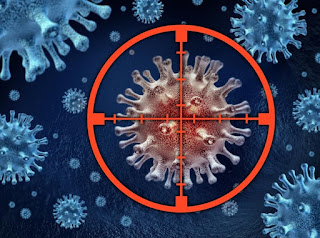From Initial Symptoms to Diagnosis: Mesothelioma Testing Procedures
Undergoing treatment for mesothelioma is a battle no one wants to fight, but for many mesothelioma patients, the rocky road begins even before their diagnosis. Because mesothelioma is a rare disease that affects approximately 3,200 people every year, many general medical professionals do not have the experience or training to diagnose the disease . Initial mesothelioma symptoms can mimic those of the common cold or flu, so when a patient arrives in their office complaining of fatigue, a bad cough, and shortness of breath, most doctors do not automatically assume this rare cancer caused by asbestos exposure could be the problem.
If you think that you or someone you care about may have mesothelioma, there are tests and procedures to be aware of as you make an appointment for an initial consultation. By understanding how mesothelioma is diagnosed, you can begin to advocate for yourself if you feel your doctor is not picking up on the warning signs.
The Initial Consultation
In your initial consultation, it is important that you explain all troublesome symptoms to your doctor. They will likely review your medical history with you and conduct a thorough physical examination. At this time, you should be sure your doctor is informed of any history of asbestos exposure, especially if you ever had a high-risk occupation in which you were exposed at work on a regular basis.
Your doctor may order blood tests, but mesothelioma cannot be diagnosed from a blood test alone. A routine metabolic profile and blood count can provide your doctor with some general information about your health. Blood tests that may be ordered to specifically assess for mesothelioma include osteopontin and mesothelin-related peptides, which are not diagnostic, but more commonly elevated in people with mesothelioma.
Chest X-Ray
Most medical professionals will order a chest x-ray as an initial screening test because it is quick, easy, and may give them an idea about what is causing your symptoms. They will be looking for an abnormal thickening of the pleura, calcium deposits on the pleura, or fluid anywhere around or in the lungs/chest.
Computerized Tomography (CT) Scan
Another common mesothelioma diagnostic procedure is the CT scan, which allows for more detailed imaging than a regular x-ray. A CT scanner rotates around your body and takes multiple pictures that are combined to create imaging “slices” of your body. CT scans are used to help pinpoint the exact location of the mesothelioma and to stage the cancer. The CT scan can help determine what sites to biopsy to confirm the diagnosis of mesothelioma (which can only be diagnosed by a pathologist who looks at cancer cells under a microscope – see below).
Positron Emission Tomography (PET) Scan
With a PET scan, a radioactive substance is injected into your blood and a specialized scanner will take a picture of any radioactive activity in the body. With cancer staging, a radioactive form of sugar (called FDG) in injected; cancer cells readily absorb this sugar allowing the PET scanner to detect where the cancerous tumors are in the body. A CT scan is often done at the same time as the PET scan so that the doctors can correlate where in the body the radioactivity is coming from. A PET/CT scan can show doctors if and where the cancer has spread.
Magnetic Resonance Imaging (MRI) Scan
MRI scans, like CT scans, provide imaging slices of your body. Unlike a CT scan which uses high energy radiation, an MRI uses (safe) radio frequency waves and magnetic fields (which will preclude it use in people with cardiac devices, cochlear implants or some metal implants). The MRI provides a more detailed view of your body’s soft tissues and can be helpful in better determining the exact location and extent of disease.
Biopsies
After undergoing 1 or more of the above imaging tests, your doctor will likely have an understanding as to what is going on in your body — at the very least, he or she will know if anything looks abnormal. If they feel you may have mesothelioma (or another cancer), a biopsy will usually be done to get a diagnosis.
Biopsies can be obtained in different ways (i.e. surgical vs. nonsurgical), but the idea is the same behind all of them: Doctors collect a sample of tissue or fluid and pathologists will examine the tissue or fluid to look for the presence of cancer cells, and analyze those cancer cells if they are found. Accurately identifying and staging mesothelioma is critical to successful treatment.
Getting a Mesothelioma Diagnosis: The Sooner, The Better
As is the case with most cancers, the sooner you can see a doctor and get an accurate diagnosis, the better your chances are for survival. Once your doctor has determined mesothelioma is the culprit, you will learn about the stages of mesothelioma, the type you have, treatment options, and your overallprognosis.
Advocate for yourself, be an active participant in the entire process, and try to stay optimistic — you didn’t choose your mesothelioma diagnosis, but you can choose how you fight it.















